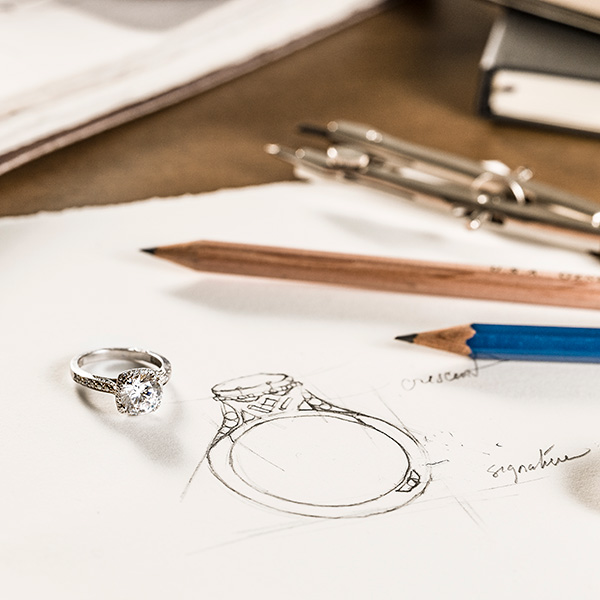
The Crescent, hero design signature of the family-owned and -operated bridal jewelry brand Tacori, is celebrating its 25th anniversary this year.
This interests me for a couple reasons. One is that I am fascinated by jewelry history, even fairly recent history. I always want to unpack how a single object or motif can make a brand a legend, or an enduring exemplar of commercial success.
The other is that the ascent of Tacori dovetails with my own career as an editor, starting at wedding magazines and coming up to my current focus primarily on the fine jewelry trade.
So a month after meeting with Nadine Tacorian Arzerounian, Tacori’s COO and head of design, in New York to see the brand’s newest collection, I interviewed her to learn the origin story of the Tacori Crescent. After all these years covering the bridal jewelry sector, there was so much I didn’t know— except that Tacori definitely had an impact on this category when things were pretty basic and boring.
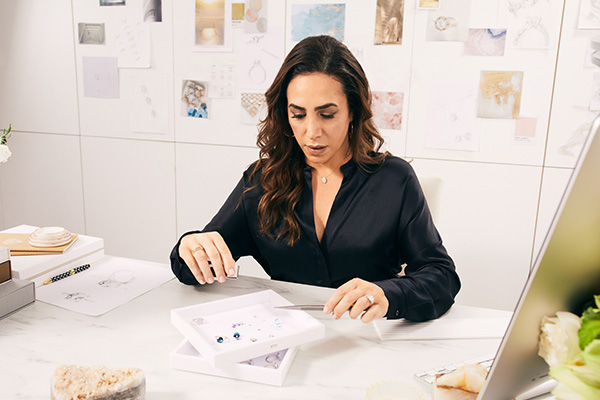
Arzerounian is the daughter of Haig Tacorian, who founded the company in 1979; her brother Paul, once the brand’s frontman and CEO, now serves as chairman of the board. Our conversation, below.
Take us back to 1998, when the Crescent was introduced. Where was Tacori as a brand at that point?
Tacori was a small, growing company. My father, Haig, had a vision to differentiate the brand with a distinctive look and a strong sense of beauty and style.
Was the Tacori Crescent what put your company on the map?
The Tacori Crescent was a true design innovation. Haig commissioned an artisan, Garo Kourounian, to imbue a ring design with a hidden symbol of love. Haig actually rejected the first iteration, a series of hearts etched into the inner face of the ring, as he felt it was not subtle enough. The revised version featured a series of arcs—just the top half of the heart—encircling the inner face of the ring. Ultimately, the Tacori Crescent design debuted with a single band, style HT2229.
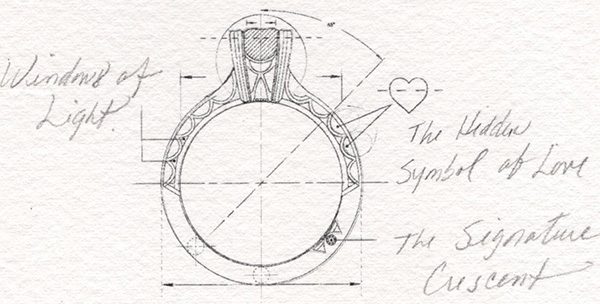
How did your family find Garo Kourounian, and what is he doing now?
Garo Kourounian is an artist—and my favorite collaborator. Haig and Garo met decades ago through pure serendipity. When Haig and my mother, Gilda, had an office in downtown L.A., it was directly across the hallway from Garo, then working as a local artisan and jewelry repairman. As they got to know each other and work together casually, Haig recognized Garo’s talent and complementary desire to innovate.
When Tacori grew out of its original studio space across the hall, Haig invited Garo to move with us to our new design studios. Garo continues to work and collaborate with me on new collections. He leads on the intersection of design and technology, and I cannot imagine a better partner to design and dream with.
What was the retailers’ response to style HT2229 initially? Do you remember the first stores to pick it up?
When Haig brought the ring to his best customers, it sold into every single store. Lucido Fine Jewelry in Detroit and Padis Jewelry in San Francisco were among the first to carry it. Desire for the style caught on quickly, and Tacori became a brand in demand overnight.
What did the Crescent offer that was different from what else was happening with bridal jewelry design in the late 1990s?
The original Crescent was intricate in styling, and crafted to be more delicate—and airier—than other designs on the market. Tacori was one of the first jewelers to adopt CAD technology in design. The use of CAD in the design process allowed our designs to be intricate and delicate, a look that was in contrast to the heavy, two-tone filigree pieces and hand-engraved scrollwork that dominated the market at the time. As Tacori has grown, our design team has been able to really accelerate the use of these technologies to craft beautiful, delicate pieces with gorgeous hidden details.
Obviously, Tacori has evolved so much as a brand since the debut of the Crescent 25 years ago. What are some other important points in the brand’s history?
I grew up watching my parents build the Tacori brand. Paul and I would visit the design studios and take turns sitting in our dad’s office chair. We dreamed of the day we would join the family tradition. Over the past 30-plus years we’ve helped build the business with our parents. It was a huge milestone for us as a family when, in 2016, Paul stepped in as CEO and I became the COO and head of design.
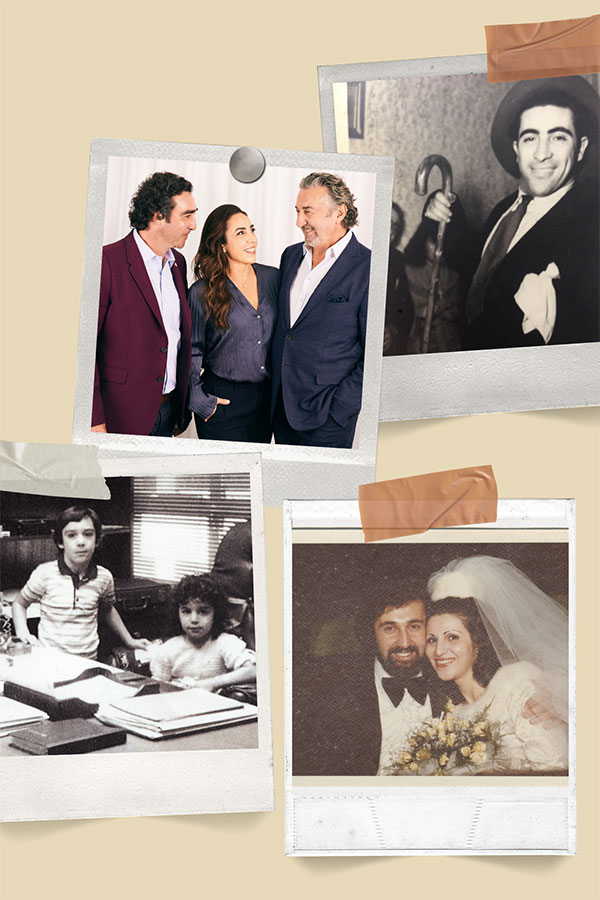
Of course there were other milestones along the way. In 2003, Trista and Ryan chose Tacori wedding bands on ABC’s The Bachelorette. Demand spiked; our growth was explosive. In 2005, I saw an opportunity to put a new spin on my father’s Crescent designs. My one-of-a kind Tacori engagement ring inspired a modern, streamlined collection we called Simply Tacori, and it ushered in a new design era for the brand.
As we celebrate Crescent’s 25th anniversary, we have another exciting milestone in our Tacori rand evolution: This summer we were thrilled to appoint Roeya Vaughan as our first external CEO.
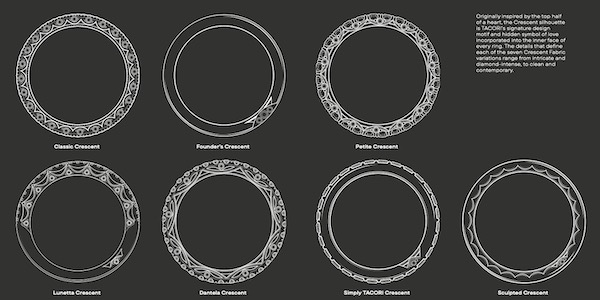
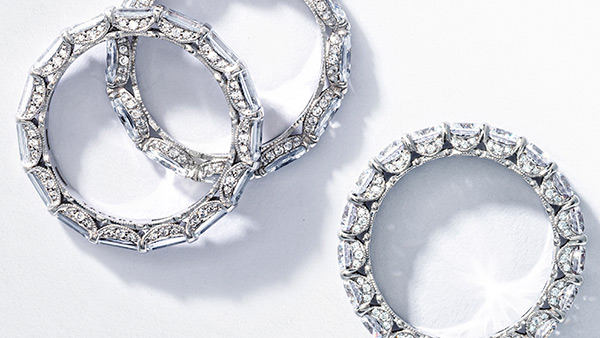
In 25 years, has the average bridal consumer changed?
In bridal trends, we’ve seen it all. Preferences shift. Today we are seeing larger (and often lab-grown) center stones on thin foundations. We evolve our designs over time to be in step with our consumer. I love to try new styles and aesthetics. But regardless of what’s trending, we remain true to Haig’s original vision, and we push ourselves to be distinctive and innovative.
In the past three years, we’ve really taken the opportunity to reflect on who we are as a brand—what makes us special, what connects us to our community of fans, and where we’d like to go together. This introspection, coupled with some extensive consumer research, has given us a clarity of purpose and we’ve evolved our external brand expression to better reflect our core values, challenge industry clichés, and embrace a broader range of commitment milestones.
Top: Bridal and fine jewelry brand Tacori owes it success—and continued growth—to a mix of smart business, impactful marketing, and a single design: the Tacori Crescent, a touchstone for the brand ever since it debuted 25 years ago.
Follow me on Instagram: @aelliott718
- Subscribe to the JCK News Daily
- Subscribe to the JCK Special Report
- Follow JCK on Instagram: @jckmagazine
- Follow JCK on X: @jckmagazine
- Follow JCK on Facebook: @jckmagazine








